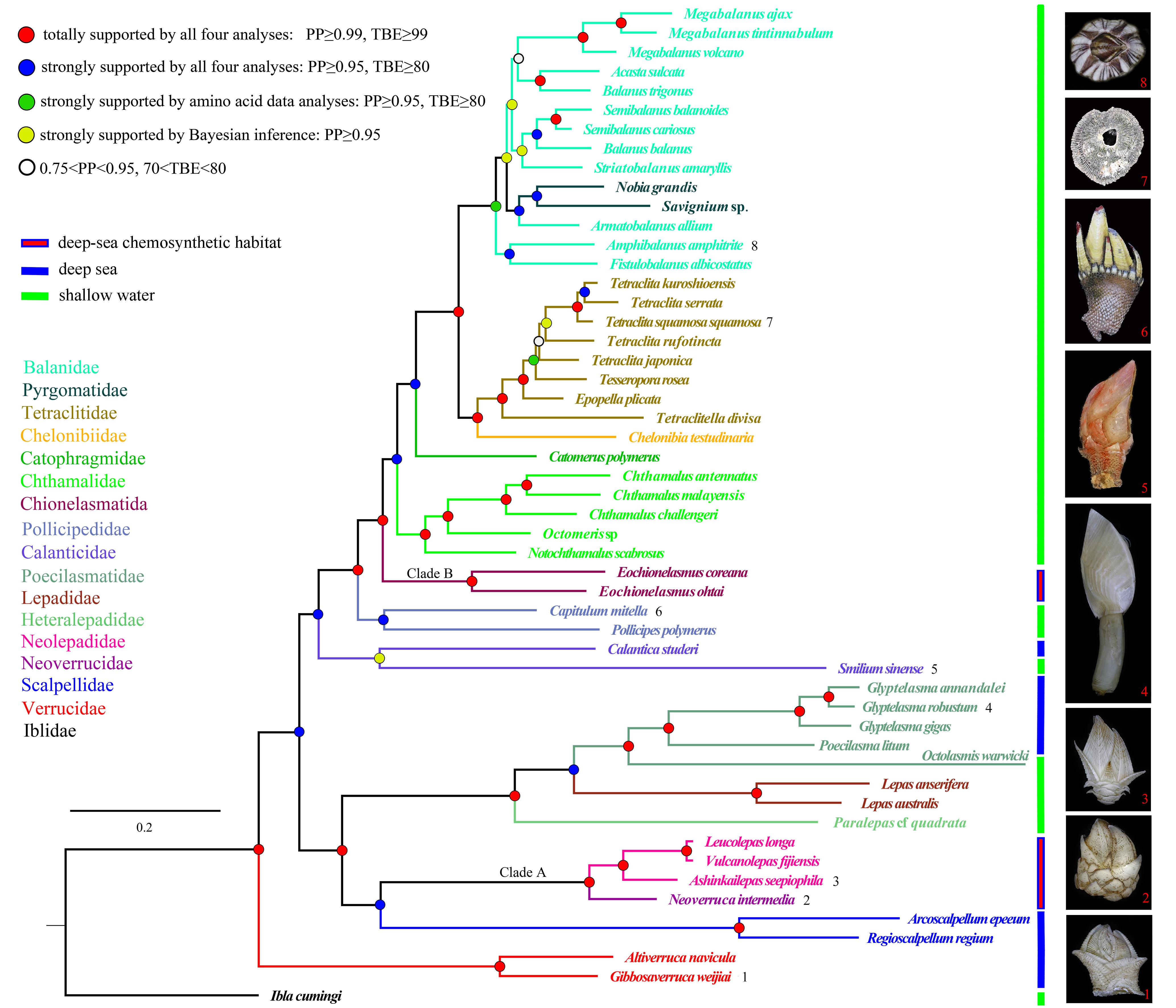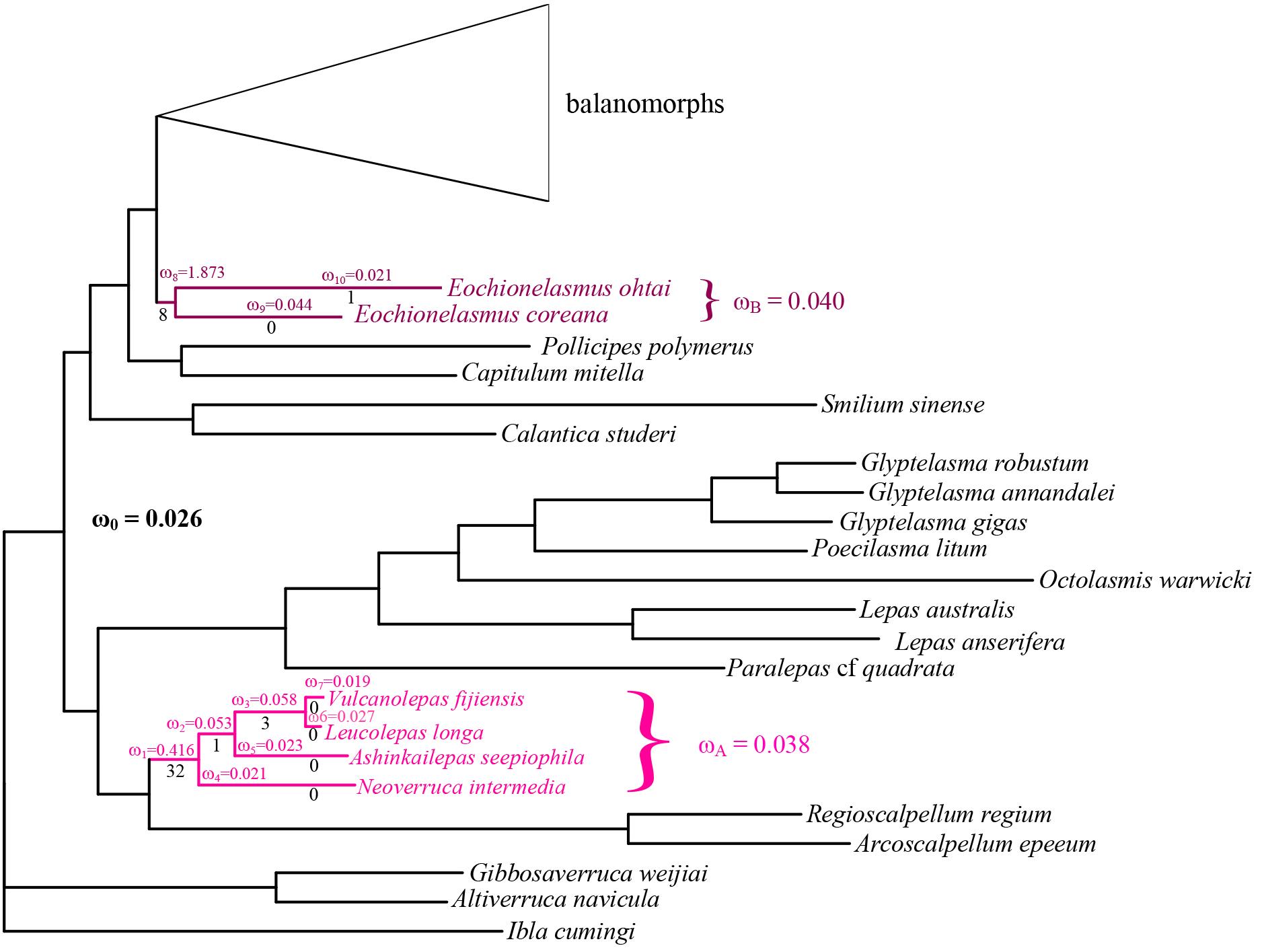Since at least Darwin time, the phylogenetic history of thoracican barnacles has been recognized as both fascinating and controversial, owing to their unique configuration, morphological diversity, convergent evolution, and ubiquity in ocean habitats.
Moreover, barnacle is a unique group that has evolved in parallel identical somatotypes (sessile, stalked and asymmetric) in both normal and chemosynthetic environments, and represents excellent model for evolutionary and ecological studies in marine organisms.
Recently, the research team led by Prof. LI Xinzheng from the Institute of Oceanology of the Chinese Academy of Sciences (IOCAS) performed a comprehensive mitogenomic analysis to explore the evolutionary history of barnacle, and to characterize the genetic adaptive features of chemosynthetic barnacles living in harsh marine environments.
The study was published in Frontiers in Marine Science on September 15.
In this research, the classical view of the common origin of sessile barnacles was clearly rejected by the phylogenetic inferences and topology test, but the common origination of pollicipedids, calanticids and balanomorphs was firmly demonstrated. Phylogenetic, morphological and fossil evidences indicate an alternative origin for the verrucomorphs, that they might originate from archaeolepadomorphs at the upper Triassic (225 million years ago).
Two distinct chemosynthetic barnacle lineages were recovered based on the mitochondrial genome data, indicating that barnacles have colonized deep-sea chemosynthetic at least twice in history. Selective pressure analyses show that both two lineages had undergone relatively high selective pressures when their ancestors colonized the chemosynthetic biotope. But the specific selective sites of these two lineages were various. This phenomenon reveals that genomic response to environmental change not only depends on external factors but also relates to themselves.
"We found the divergence times of chemosynthetic lineages occurred just posterior to the Cretaceous-Paleogene mass extinction and Cenomanian/Turonian oceanic anoxic event. These events had greatly reduced the diversity of marine organisms, so a lot of ecological niches would have been created following these events. Combined with our results, we speculate that ecological niche vacancy, sitotaxis, and gene specificity in adaptive stress responses contribute to the origin and diversification of barnacles in chemosynthetic ecosystems," said GAN Zhibin, first author of the study.
"The research outlines a credible evolutionary history for barnacle lineages, especially for the chemosynthetic lineages, and provides new insights into the phylogeny of barnacle. It is furthermore confirmed that the evolution of animal is promoted by multiple factors," said Prof. LI.
This research was funded by the National Key R & D Program of China and the Senior User Project of RV KEXUE.

Fig. 1 Phylogenetic topology inferred from mitogenomes of barnacles

Fig. 2 Maximum clade credibility time-scaled tree based on mitogenomes

Fig. 3 Barnacle lineages annotated with selective pressure
Gan Z, Jones DS, Liu X, Sui J, Dong D and Li X. (2022). Phylogeny and adaptative evolution to chemosynthetic habitat in barnacle (Cirripedia: Thoracica) revealed by mitogenomes. Front. Mar. Sci. 9:964114. doi:10.3389/fmars.2022.964114.
(Text by GAN Zhibin)
Media Contact:
ZHANG Yiyi
Institute of Oceanology
E-mail: zhangyiyi@qdio.ac.cn
(Editor: ZHANG Yiyi)

